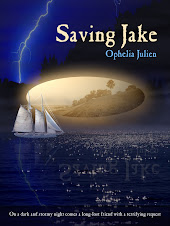Anyone who has ever felt just the slightest tingle of uneasiness while touring a museum, raise your hand. Okay, let's talk about that.
While I was at the Psychic and Paranormal Expo with my fellow writer (and ghost hunter) Sylvia Shults, I asked her what was on her bucket list of places to investigate. After all, I had just put up a blog post about my own bucket list so I was curious about hers. To my surprise, she named two local Chicago museums: The Museum of Science and Industry, and The Field Museum of Natural History.
I've been to both but had a membership to the Field for some years, so I'm more familiar with that one.
The Museum of Science and Industry houses a coal mine that can be toured, a German U-boat from WWII, and an old train car. All three of them have been noted as at least disturbed, if not all the way haunted. Having visited both the coal mine and the U-boat, I can understand why.
But the Field Museum, at least to me, would win a hands down contest between the two for "Eeriest Public Place Frequented by Visitors and Tourists." The Field not only has extensive fossil collections -hey, it has Sue, the most complete T-Rex skeleton ever found, as well as its new Titanosaurus that dwarfs pretty much everything else on the first floor,- it also has a large Egyptian display in the basement, and halls and halls filled with the personal belongings of various groups of indigenous people from all the populated continents. With dioramas.
I am fascinated by those displays. I always have been. As a kid I loved to look at the beaded buffalo garments from the Plains nations here in North America, or the utensils and weapons from different peoples in Africa. As I grew more educated, I began to wonder how early collectors got their hands on so many of these items which were surely prized by the people who had made them. And as I started paying more attention to atmosphere, or ambiance, or whatever the correct term may be, I began to feel things through the display glass. I wondered about the woman who had painstakingly beaded that buffalo hide, or the man who had wielded that cruel-looking cudgel. And I wondered what became of all of them, that their possessions should end up on display in a city so far away from where they had lived.
Now, when Jim and I take the grandkids to the museum, we tour through those displays so that the children can look at all of these artifacts the way we had once done. But we never linger. Jim and I both feel a bit of uneasiness there, and my sensitive grandchildren either pick up on that, or are experiencing their own feelings of...what? Disturbance? Edginess? Maybe even lingering residual anger or grief? As goofy as it may sound, I get the sense that everything in those cases may be displayed sensibly -even scientifically- but despite the glass that encompasses them, there is still an energy or an aura emanating from them that hearkens back to their places, and people, of origin.
I had an English professor who traveled extensively through the Outback in Australia and she told me one time that when you were exploring various locations with your guide, and were told that certain places were not to be walked through casually or even entered at all, you paid attention. She said that you could feel something in those places, something that didn't lend itself to touching or measuring or examination, but that was there nonetheless.
One time when Jim and I, along with my sister and her husband, took a tour through an ancient archeological site in New Mexico, the guide told us that where we stood had once been a place of worship. He was careful to greet whatever spirits resided there on our behalf, and also to thank them for allowing us to have visited when it was time to leave. He was serious. And the space itself was rife with an undercurrent of energy or force. Whatever was there, it felt sentient.
During Jim's studies in Native American culture, we met a woman who sold art, jewelry, and blankets from the Southwest nations. She also sold kachina dolls, figures representing different deities from the Hopi culture. Her particular figures stood twelve to fourteen inches in height and were clothed in proper traditional regalia. We admired them and talked to her about her store, and offhandedly she mentioned that when she closed her shop at night and put the dolls back into their glass cabinets, that she never shut the doors on those cabinets.
We were surprised. "Aren't you worried about people breaking in and stealing them?" I asked.
"Not really," was her reply. "And closing them in like that is a mistake." She went on to mention that the energy in the dolls, even though they were reproductions, was enough to have shattered glass. From the inside of the cases. "After that happened, I don't close the doors anymore," she said. "And I no longer have that kind of problem."
So I guess I can understand my friend wanting to investigate the Field Museum. Something is present in and around those display cases. I can't tell you why the glass has never shattered in those museum displays. Although to tell you the truth, I also can't tell you for a fact that it has never happened.





